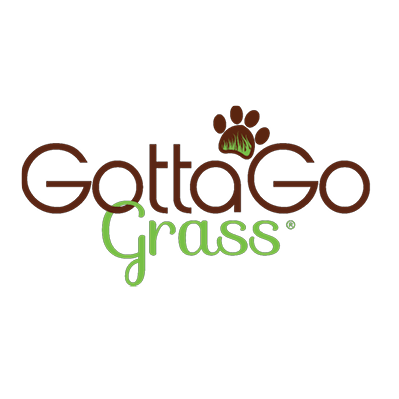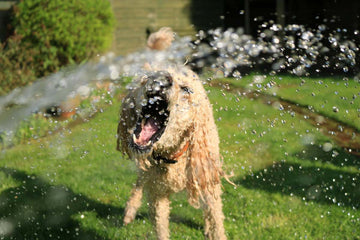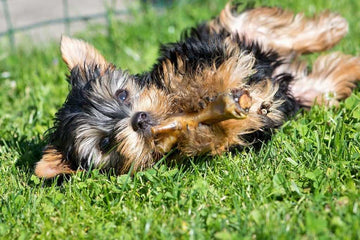
Golden Retriever puppies are a bundle of joy—and energy. With their friendly demeanor, wagging tails, and boundless enthusiasm, they’re often seen dashing around the house in a fit of zoomies that leave their humans laughing, and maybe a little breathless. These golden-coated companions are as playful as they are affectionate, which is why they’re a favorite breed for families and first-time dog owners alike.
But behind those joyful sprints and curious sniffing sessions is a puppy that needs proper exercise to stay physically fit, mentally stimulated, and well-behaved. Like all dogs, Golden Retrievers require movement and activity to grow strong and healthy. But because they’re still developing, it’s important to strike the right balance. Too little exercise may lead to pent-up energy and undesirable behaviors, while too much can put unnecessary strain on a puppy’s growing joints and bones.
Understanding Golden Retriever Puppy Energy Levels
It’s no surprise that Golden Retrievers ranked as the third most popular dog breed in the US in 2024. Their loyalty, intelligence, and affectionate nature make them ideal family dogs. But with their rising popularity comes the need for dog owners to understand just how energetic this breed can be, especially during puppyhood.
Golden Retriever puppies experience short but frequent bursts of high energy, commonly known as “zoomies.” These wild sprints are normal and usually a sign of excess energy that needs an outlet. Unlike adult Goldens, which typically mature with age and benefit from more structured physical exercise, puppies rely on a combination of play, training, and rest to develop good behaviors and routines.
As your new puppy grows, their exercise needs will vary depending on their age and stage of development. Tailoring activities to match their physical growth is crucial for preventing injuries and helping them build healthy habits.

Safe and Fun Exercise Ideas for Golden Retriever Pups
The goal of puppy exercise is to create a fun, enriching environment that supports both mental and physical development. Golden Retrievers thrive on variety, so a mix of walks, games, and interactive toys is ideal for their overall well-being. Keep sessions short, frequent, and low-impact to protect your puppy’s joints, while still giving them plenty of outlets for their energy.
Short Walks
A casual stroll is a great way to introduce your puppy—who is naturally curious—to the world outside. Begin with 5-10 minute walks once or twice daily and gradually increase duration as your puppy grows older. Avoid walking long distances or on hot pavement, and let your puppy set the pace.
-
8–12 weeks: Short walks in a quiet, safe area
-
3–6 months: 10–15 minutes, 2-3 times a day
-
6–12 months: Up to 30 minutes with breaks as needed
Play Sessions
Puppies learn best through play. Games like fetch, tug-of-war, or chase with plush toys can provide structured physical exercise while helping to reinforce bonding and trust. Free play also teaches puppies how to interact with other dogs and people, which builds their social skills.
When playing outdoors, always use a leash or a fenced-in area to keep your puppy safe. Indoors, clear, open spaces like hallways or living rooms can be perfect for quick, playful interactions.
Training as Exercise
Incorporating training into your puppy’s playtime tires them out, and most importantly, lays the foundation for good behaviors. Use basic commands like “sit,” “stay,” and “come” in between games or walks to keep their minds sharp. Reward-based training keeps your Golden engaged and motivated.
Training games like hide-and-seek or “find the treat” can double as brain workouts and bonding exercises.
Puzzle Toys and Interactive Games
Golden Retrievers are highly intelligent and often benefit from puzzle toys that challenge their thinking. Interactive toys like treat-dispensing balls, snuffle mats, and beginner-level puzzle boards help satisfy your puppy’s need for stimulation, especially during downtime or rainy days.
These toys offer an outlet for excess energy while preventing boredom and destructive chewing.
Swimming
For older puppies, swimming is an excellent low-impact exercise that’s gentle on their joints while offering a full-body workout. For puppies older than six months, supervised swimming in shallow water can be a great addition to their routine.
Start slow—let them get used to the water gradually, and always keep the environment safe and clean. A dog-friendly pool or calm lake with no current is ideal.
Golden Retriever Exercise Tips by Age Group
To meet your puppy's changing needs, below is a quick breakdown by age.

Each dog will differ, so always monitor your puppy’s energy levels and mood. The goal is a tired dog, not an overtired one.
Signs of Over Exercising and Underexercising
Golden Retriever puppies are eager to please and may push themselves too far if not carefully monitored. While regular exercise is crucial for development, your puppy’s bones are still soft and growing, making it easy to overdo it.
Signs of Over Exercising:
-
Limping or stiffness after activity
-
Reluctance to move or lie down
-
Excessive panting or drooling
-
Lack of interest in play
Signs of Under Exercising:
-
Chewing furniture or shoes
-
Hyperactivity or jumping on people
-
Weight gain
-
Barking or whining for attention
Most dogs, especially puppies, need structured, physical exercise multiple times a day. However, the appropriate amount of exercise will vary depending on factors like age, breed, and temperament. Observing your puppy’s behavior is the best way to find the right rhythm.
Bonus Tips for Managing the Zoomies
Zoomies, also known as “Frenetic Random Activity Periods,” usually strike in the evening or after a nap. These bursts of sudden, joyful energy are entirely normal and healthy, as long as they’re managed in a safe environment.
Create Safe Spaces: Use hallways, fenced backyards, or carpeted rooms to allow your puppy to run freely without bumping into sharp corners or furniture.
Turn It into a Game: Redirect that energy into a quick game of fetch or "chase the toy". You’ll help them burn off energy while reinforcing good behavior.
Avoid Reinforcing Bad Habits: If zoomies lead to nipping, jumping, or running into people, pause playtime and let them settle down. Calm redirection is key.

Indoor Grass Potty Pad Solution for Active Puppies
In the midst of play and training, bathroom breaks are inevitable. Gotta Go Grass offers a clean, real-grass potty solution perfect for energetic puppies learning where to go. Especially helpful for apartment dwellers or during rainy days, our grass pee pad for dogs gives your puppy a natural-feeling spot to relieve themselves indoors without interrupting their routine.
Its portability also makes it ideal for managing zoomies—just place one in their play area or near the door as part of your house training setup. As your puppy associates play, rest, and potty time in one area, they begin to develop consistent habits that support overall training.
Final Thoughts
Raising a Golden Retriever puppy is a joyful adventure full of cuddles, laughter, and yes—zoomies. With the right mix of physical exercise, mental stimulation, and downtime, your new puppy will grow into a well-mannered, happy companion. Just remember: what works for other dogs may not always work for yours, so stay attuned to their unique needs.
Whether you’re navigating puppy sprints around the coffee table or encouraging their first swim, embrace the energy and enjoy every moment. This stage may be wild, but it passes quickly, and the bond you build during these early months will last a lifetime.




